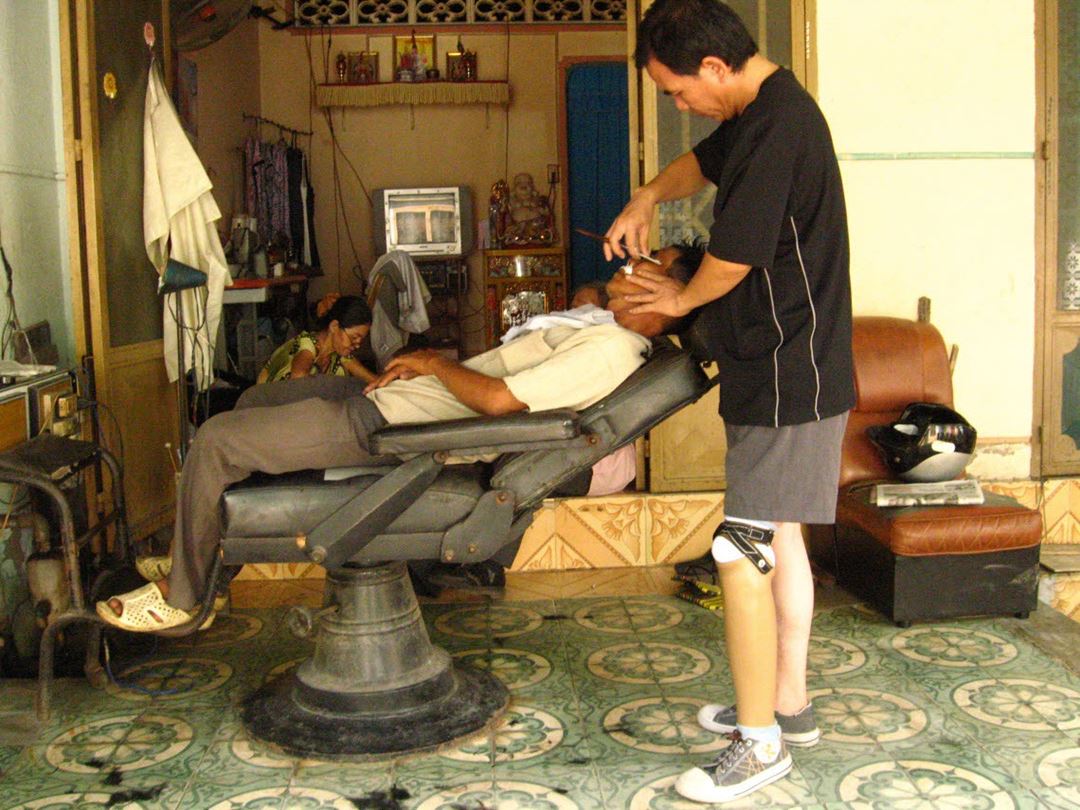The Regional Office for the ICRC Special Fund for the Disabled (SFD) in Asia, located in Ho Chi Minh City, Vietnam, supports physical rehabilitation services for war victim amputees. The services which were started by ICRC in late 1988, were taken over by SFD in 1995, and has developed into a nation-wide service in collaboration with the Ministry of Labour, Invalids and Social Affairs (MoLISA), and later on also with the Vietnamese Red Cross Society (VNCR). Over the years, a need has been identified to assess and monitor the activities and results of the services. In 2011, SFD agreed with SINTEF to collaborate on a survey among beneficiaries of the services.
The data material for the study comprised i)a representative, interview-based survey among amputees who had received physical rehabilitation services supported by SFD, and ii) the existing patient registry for SFD in Vietnam. The survey was restricted to the four catchment areas in the southern part of Vietnam and included a net sample of 650 beneficiaries. The registry comprised well over 28 000 beneficiaries.
The study provides a broad picture of the population that is served by these services, and it has generated some new knowledge about the perceived impact of the services on its beneficiaries. The study provide an example on how survey methodology may be utilized to supplement and in an effective way provide new knowledge that can add to the often limited information that is found in administrative registries. New knowledge has been generated that may be useful for the future operations of the prosthetic services in Vietnam, and the findings do have relevance for similar types of programs elsewhere.
Three main questions were addressed by this study:
To what extent did the ICRC-SFD project play a key role on the accessibility to prosthetic rehabilitation services for its main target population?
- Only around one in ten of the beneficiaries in the survey state that they would buy a prosthesis themselves if this was not s paid by the Red Cross, i.e. ICRC-SFD. Other solutions are indicated by many, as for instance help from family or other humanitarian organization, but it is safe to indicate that a substantial proportion of the beneficiaries would be without prosthesis and that many would risk being without as their alternatives seem rather insecure.
Has access to rehabilitation services had a positive socio-economic impact on the project's target population?
- Around two thirds of the beneficiaries link income improvement directly to access to prosthetic services. While this for the large part concerns "slight improvements" in income, more than eight out of ten regard the prosthesis as very important for earning a living. Ambulation capacity is strongly improved with a prosthesis, and this can be assumed to impact not only on access to jobs and increased attractiveness on the job market, but also on the ability to keep a job over time. It is thus clearly indicated in the survey that prosthesis services has had a positive impact on the target population of the project.
Would further support from ICRC-SFD be required for prosthetic services follow-up?
- The beneficiaries in the survey have few good alternatives to further support from ICRC-SFD. Main concerns if need for a replacement or repair of the current prosthesis are costs, travel, time restrictions and quality aspects – with cost-related concerns being the most prominent. Further support from ICRC-SFD would thus be required for prosthetic service follow-up also in the future, and until this free service is taken over by the authorities or other humanitarian organization, or most ideally covered within a universal health insurance system.
With the original target population being victims of the war that ended in 1975, this sub-population is now around 60 years of age. Scoring relatively low on the socio-economic indicators, and not being covered by a social protection program, this group is vulnerable to negative impact if ICRC-SFD support to prosthetic services should be reduced or taken away without being replaced by other type of support. Most likely then, the support to this particular population will be needed for a while, knowing that if no alternative solution is found within a state social protection scheme, the target population may still have limited access to needed prosthetic services for the next 20 years.

